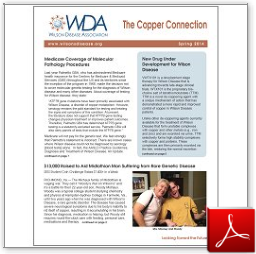Cholestasis
http://www.ncbi.nlm.nih.gov/pubmed/27429428
Guideline for the Evaluation of Cholestatic Jaundice in Infants: Joint Recommendations of the North American Society for Pediatric Gastroenterology, Hepatology, and Nutrition (NASPGHAN) and the European Society for Pediatric Gastroenterology, Hepatology, and Nutrition (ESPGHAN).
awaz R, Baumann U, Ekong U, Fischler B, Hadzic N, Mack CL, McLin VA, Molleston JP, Neimark E, Ng VL, Karpen SJ. J Pediatr Gastroenterol Nutr. 2016 Jul 16
Abstract
https://www.ncbi.nlm.nih.gov/pubmed/31708211 Cholestasis
J Pediatr Surg. 2019 Nov 5. pii: S0022-3468(19)30664-5. doi: 10.1016/j.jpedsurg.2019.09.018. [Epub ahead of print]
Ileal Exclusion for Pruritus Treatment in Children with Progressive Familial Intrahepatic Cholestasis and other Cholestatic Diseases.
Van Vaisberg V1, Tannuri ACA1, Lima FR1, Tannuri U2.
Abstract
BACKGROUND:
http://www.ncbi.nlm.nih.gov/pubmed/25633496
Teng J, Arnell H, Bohlin K, Nemeth A, Fischler B. Impact of parenteral fat composition on cholestasis in preterm infants. J Pediatr Gastroenterol Nutr. 2015 Jun; 60(6):702-7.
Abstract
OBJECTIVES:
Parenteral nutrition-associated liver disease (PNALD) is frequently detected in neonatal intensive care units. Parenteral lipid emulsion (PLE) content has been implicated in its pathogenesis. We aimed to study the effect on incidence and outcome of PNALD by replacing soy-based PLE with olive oil-based PLE in a population-based group of preterm infants.
METHODS:
https://www.ncbi.nlm.nih.gov/pubmed/29174177
Cholestasis
J Pediatr Surg. 2017 Nov 23. pii: S0022-3468(17)30711-X. doi: 10.1016/j.jpedsurg.2017.10.055. [Epub ahead of print]
Erginel B, Soysal FG, Durmaz O, Celik A, Salman T.
Abstract
BACKGROUND:
Partial internal biliary diversion (PIBD) is an alternative approach for the treatment of devastating pruritus in patients with progressive familial intrahepatic cholestasis (PFIC). In these patients quality of life can be improved and progression of liver disease can be delayed while waiting for liver transplantation. The aim of our study was to evaluate six patients with PFIC who have undergone PIBD in long-term follow-up.
METHODS:
https://www.ncbi.nlm.nih.gov/pubmed/32124521 Cholestasis
Liver Int. 2020 Mar 2. doi: 10.1111/liv.14422. [Epub ahead of print]
Low-GGT intrahepatic cholestasis associated with biallelic USP53 variants: clinical, histological, and ultrastructural characterization.
Zhang J1,2, Yang Y1,2, Gong JY1, Li LT2, Li JQ1, Zhang MH1, Lu Y2, Xie XB2, Hong YR3, Zhang YU3, Knisely AS4, Wang JS2.
Abstract
BACKGROUND AND AIMS:
In about 20% of children with cholestasis and normal or low serum gamma-glutamyltransferase (GGT) activity, no etiology is identified. We sought new genes implicated in pediatric hepatobiliary disease.
METHODS:
http://www.indianpediatrics.net/mar2014/mar-203-210.htm
Vidyut Bhatia, *Ashish Bavdekar, John Matthai, #YogeshWaikar and AnupamSibal. Management of Neonatal Cholestasis: Consensus Statement of the Pediatric Gastroenterology Chapter of Indian Academy of Pediatrics. Indian pediatrics. 2014; 51(3): 203-10
Justification: Neonatal cholestasis is an important cause of chronic liver disease in young children. Late referral and lack of precise etiological diagnosis are reasons for poor outcome in substantial number of cases in India. There is a need to create better awareness among the pediatricians, obstetricians and primary care physicians on early recognition, prompt evaluation and referral to regional centers.
https://www.ncbi.nlm.nih.gov/pubmed/31450232 cholestasis
Pediatr Res. 2019 Aug 26. doi: 10.1038/s41390-019-0548-8. [Epub ahead of print]
Molecular findings in children with inherited intrahepatic cholestasis.
Wang NL1, Lu Y1, Gong JY2, Xie XB1, Lin J3, Abuduxikuer K1, Zhang MH2, Wang JS4.
Abstract
BACKGROUND:
Genetic defects account for a substantial proportion of pediatric cholestasis. This study explored the molecular findings in a large cohort of Chinese patients with inherited cholestasis.
METHODS:
Between January 2012 and June 2016, 809 Chinese pediatric patients with suspected inherited intrahepatic cholestasis were evaluated by Sanger sequencing and/or panel sequencing.
RESULTS:
http://www.ncbi.nlm.nih.gov/pubmed/26858187
Togawa T, Sugiura T, Ito K, Endo T, Aoyama K, Ohashi K, Negishi Y, Kudo T, Ito R, Kikuchi A, Arai-Ichinoi N, Kure S, Saitoh S. Molecular Genetic Dissection and Neonatal/Infantile Intrahepatic Cholestasis Using Targeted Next-Generation Sequencing. J Pediatr. 2016 Apr; 171:171-177.
Abstract
OBJECTIVES:
To ascertain a molecular genetic diagnosis for subjects with neonatal/infantile intrahepatic cholestasis (NIIC) by the use of next-generation sequencing (NGS) and to perform a genotype-phenotype correlation.
STUDY DESIGN:





